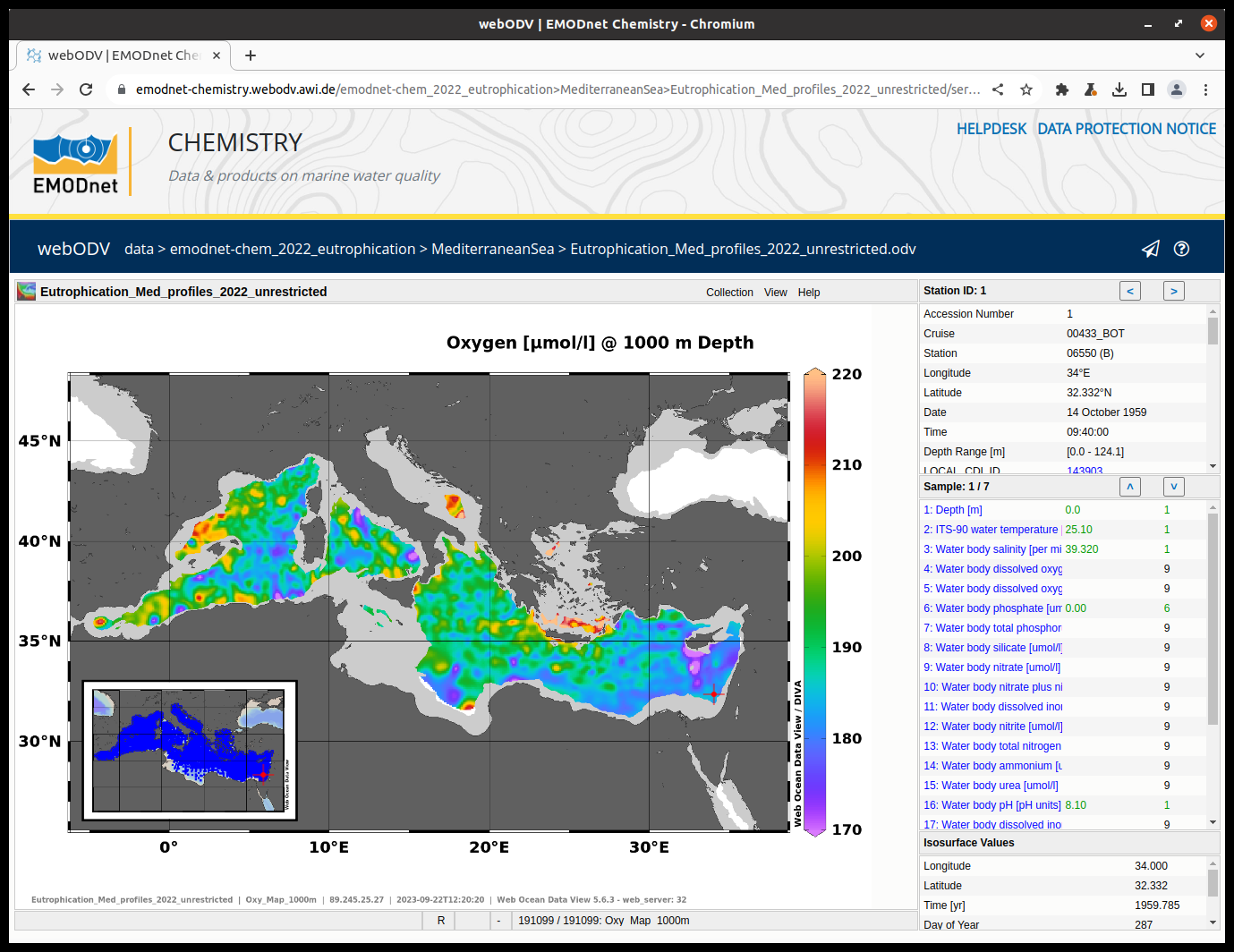webODV - Online Analysis and Visualization

webODV is the online version of the ODV (Ocean Data View) software and provides typical ODV functionality in the form of web services. The idea is to provide clients with user-friendly interfaces in their web-browser and access datasets that are centrally maintained and administered on a server using the full capacity of ODV. webODV can be used from every computer in the world, only an internet connection and a modern browser is needed, no special software installation or operating system is required. webODV provides online access to large international data collections and community datasets like EMODnet, and supports collaborative research, reproducibility and sharing of results. It can be used to extract, explore and analyze data as well as to prepare publication ready state-of-the-art visualizations.
webODV lets users create a large variety of plot types, including along-track sections, temporal evolution plots, maps on constant depth or density surfaces, Hovmöller diagrams and more. webODV has powerful station and sample filters as well as interactive zooming capabilities, allowing data subsetting and extraction in many different ways. webODV supports a wide range of map projections and interrupted global maps providing minimal geographical distortions for all ocean basins at the same time.
webODV allows easy access to important eutrophication and contaminants ocean data from EMODnet Chemistry for scientists, policy makers and the public, supporting the transfer of knowledge into action.
The Alfred Wegener Institute, Bremerhaven, Germany and EMODnet Chemistry are operating a webODV instance since 2021. With more than 100 users per month from 42 countries from all continents, webODV has grown into a popular tool, supporting the urgent need for better and easier access to data for research, collaboration, decision making and more.
